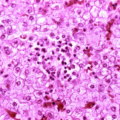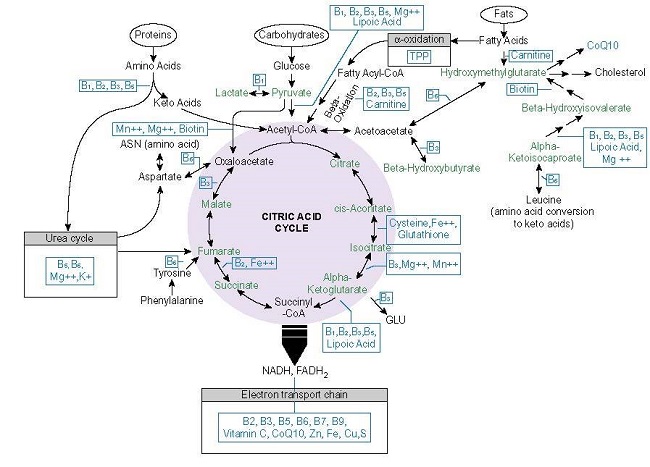I am a 29 year old female who began experiencing a decline in my health at 25 years old. This was in 2020. At that point, I had been on hormonal birth control for nearly 10 years. I suspected the birth control was contributing to my ill-health but my doctor disagreed and continued to prescribe different forms to alleviate my symptoms. That did not work and only made things worse. When Depo-Provera was added, I completely crashed and have not recovered, nearly two years later.
When I first began to experience extreme fatigue, abdominal bloating, irritability, restlessness, and massive amounts of hair falling out, I went to my primary care doctor who could find no reason for it on basic bloodwork, except for a low vitamin D level (27mg/mL). They checked CBC, CMP, autoimmune markers, B12, a complete thyroid panel, Lyme titers, mono titers, and iron levels. Since everything was basically normal, my primary care doctor blamed it on my stressful job. At the time, I was working in the emergency room on the night shift. I was not getting the best sleep, and not eating that well either. I was lucky to eat one meal a day and then maybe a snack especially on my busy shifts. On my days off, I was so exhausted that I would eat maybe twice a day. My diet consisted of easy meals like grilled chicken, salads, granola bars, processed cereals, pizza, chicken nuggets, chips, bananas here and there, and overall not a lot of fruits or vegetables.
Enter Depo-Provera
Fast forward to the fall of 2021, after these symptoms persisted, my doctor decided to switch my birth control to the Depo-Provera shot. After taking this shot, havoc was wreaked on my body and brought me down to a level of non-functioning that I never knew existed. Over the next couple months and after taking only one depo shot, I began to experience debilitating symptoms of headaches, fatigue, achy joints/all over body pain that eventually progressed into episodes of heart-racing anytime I would change position. I also experienced shortness of breath, chest pain, difficulty swallowing, a complete loss of appetite, GI issues, brain fog, severely decreased ability to concentrate, severe restless leg syndrome, insomnia, and neurological symptoms so extreme it felt like my brain was “short circuiting” for lack of a better word.
One side of my body would become extremely numb, tingly, and feel weak without any clear deficits. I experienced severe muscle weakness, where it would feel like my body was doing everything it possibly could to keep me upright and breathing. It was so bad, I felt as though I couldn’t even grip my phone and just talking on the phone to family felt like I was dying. I could barely concentrate. I developed severe visual issues, a condition called visual snow syndrome, and still am dealing with it with no improvement. I also developed tinnitus and have a constant high pitched ringing in my ear. I am unable to handle any type of stress, multi-tasking, or any emotional upset without truly feeling like my body is dying from severe neurological symptoms. I became scared to leave the house alone because of these debilitating symptoms. I lost over 30 pounds from feeling so awful and a complete loss of any desire to eat. I would have to force myself to put in fluids or food.
Over the course of many months, I saw multiple neurologists, neuro-ophthalmologist, cardiologist, electrophysiologist, primary care doctor, ENT, TMJ specialist, otologist, binocular vision specialist, rheumatologist, had numerous ER visits, two hospital admissions. I even participated in vestibular/neurological physical therapy over the course of several months. I had multiple head MRIs and CTs of my head and neck, MRIs of my spine, and so much bloodwork looking for autoimmune causes. I had a colonoscopy, a camera down my nose to look at my throat, an audiogram, a sleep study, a tilt table test, an echocardiogram, a stress-echocardiogram, and they even attempted a lumbar puncture on me as well. Conditions such as blood clots, multiple sclerosis, any type of cancer or tumor, etc., were ruled out and the only thing they came up with was a diagnosis of Postural Orthostatic Tachycardia Syndrome (POTS), a suspicion for “some type of migraine variant” and a deficiency in vitamin D and phosphorus on my bloodwork.
Could This Be Thiamine Deficiency?
Fed up and worsening, I paid out of pocket to go to a natural medicine doctor who did heavy metal and mold testing on me along with hormone testing. Nothing really turned up there and so I took it upon myself to order a full vitamin and mineral panel paying over a grand out of pocket. This panel revealed that my serum thiamine was one point away from being flagged as low (8 nmol/L). I then returned to my primary care and two different neurologists to ask if a thiamine deficiency could be the problem or at least part of it, especially after my own research and the known research that birth control depletes many B vitamins. All of the doctors told me that there was no possible way I could have a thiamine deficiency since it is added to so many foods in the United States. They also told me that I could just take a B complex vitamin if I was worried. Even after I told them I was hardly eating because I felt so sick and that when I was eating it was mostly foods like processed toast, frozen chicken nuggets, cans of soup, and other things of that nature, they still dismissed the idea of thiamine deficiency.
May-Thurner Syndrome
On top of all of the debilitating POTS and neurological symptoms, throughout my time on birth control I had complained to my GYN about persistent left sided pelvic pain. It felt like my labia was swollen and at times like something was bulging into my pelvic area. In 2019, I had a CT scan of my abdomen and pelvis done due to some GI symptoms I was having. An incidental finding on it was suspicion for pelvic congestion syndrome (PCS). The report stated that I had very prominent peri-uterine vessels and a dilated left gonadal vein. I took these results to my GYN at the time who clearly stated “PCS is a fake diagnosis and you don’t need to do anything with that.” Since I was young, in my early 20s, I didn’t take it too seriously. Again as time went on, I continued to have the pain and over the years my GYN kept changing my birth control and mentioned endometriosis and small ovarian cysts as possible causes. The birth control would help a little bit for a while but then I would have irregular bleeding and the pain would always come back. It wasn’t until after I took the Depo shot and came off of the hormones that things became worse.
I began to have severe left pelvic pain that persisted for months. I had transvaginal ultrasounds every 6 to 8 weeks to monitor recurring small cysts that they swore were not the cause of my pain. I was tested for PCOS and was negative for that too. It wasn’t until the end of 2022, that I had another transvaginal ultrasound and this one read as having a hydro-salpinx. I had a new GYN at the time who referred me to get an MRI done of my pelvis. This MRI came back as also showing “likely hydro-salpinx” on the left. Since I was having such severe pain, I was referred to a GYN surgeon who said in extremely painful cases it is recommended to take out the tube and it was pretty much nonfunctional when it was as swollen as mine. I elected to proceed with the surgery, as the pain was so extreme. Funny enough, after the surgery when the pathology came back there was no hydro-salpinx and my surgeon said he did not see any endometriosis when he performed the laparoscopy. He said he believed my MRI may have been misread since he did not see any indication of hydro-salpinx during the procedure.
As if that wasn’t enough, after the procedure I had a severe neurological reaction to the scopolamine patch they put on me during the procedure. I had so much testing for this. I was even in the hospital for 5 days with what they thought was “scopolamine patch withdrawal” even though I only had the patch on for 3 days like they told me to wear it.
Fed up and still in pain, I let it go for a few more months thinking it was just “scar tissue” from the surgery or some other easy explanation. It wasn’t until my POTS doctor recommended me to wear an abdominal binder/compression device around my stomach that things worsened so much that I was forced to figure this out. I began having severe left pelvic, hip, and leg pain after wearing this device for only 3 days. I went to the ER because the pain was so bad, but they could only find a small ovarian cyst on my left ovary. They didn’t even consider doing any other work-up. I was then sent to an orthopedic to look at my hip and back to my GYN. Neither could really give an explanation for this pain. Finally enough was enough, I went to a vascular doctor on my own accord to get this PCS, which no one seemed to take seriously, looked at.
At the vascular surgeon’s office, they did a vascular scan of my pelvis and abdomen and were quickly shocked to find that my left iliac vein was almost completely compressed causing my peri-uterine vessels to get almost no blood flow. They diagnosed me with something called May-Thurner Syndrome and said that they usually only see severe cases like mine in women who have had “5 or 6 babies.” I was 28 at the time with one previous ectopic pregnancy many years ago. They quickly scheduled me to get a stent of my left iliac vein placed, as my left leg had begun swelling bigger than my right due to the limited blood flow.
On the day of surgery, my left leg was 2 inches bigger than the right and I was in severe pain. They did a venogram with internal ultrasound and were able to tell me my left iliac vein was 85% compressed. So basically, I was getting no flow through it and hardly any return through that vein up to my heart. They also informed me that the birth control was probably masking the problem but also could have been worsening it when I was on estrogen-containing birth control. They said I was extremely lucky that I did not develop a blood clot, especially when I had taken Beyaz for several years. Now, I am on blood thinners for several months post stent, while waiting to see if this helps with my POTS symptoms at all. So far, I have not seen any improvement except that my leg is no longer swollen.
Still Seeking Answers
I don’t know if thiamine deficiency could be causing my issues, but I have not received any answers other than POTS and my recently discovered May-Thurner Syndrome. I have seen so many doctors and spent so much money with no improvement in my health. This all severely worsened after I took the Depo shot. I have been unable to work for months, was bed bound for a long time, and was completely unable to eat during the worst of my symptoms. Now, I am at least able to move around more than I was and leave the house for doctor appointments, but I am still not working and I am still searching for answers. I would like to feel better and get back to some type of semi-normal life.
We Need Your Help
More people than ever are reading Hormones Matter, a testament to the need for independent voices in health and medicine. We are not funded and accept limited advertising. Unlike many health sites, we don’t force you to purchase a subscription. We believe health information should be open to all. If you read Hormones Matter, like it, please help support it. Contribute now.
Yes, I would like to support Hormones Matter.
Photo by Kelly Sikkema on Unsplash.
This article was published originally on August 14, 2023.








































